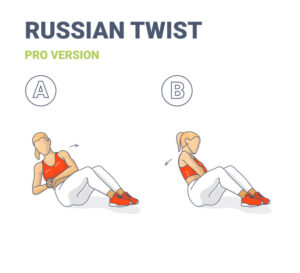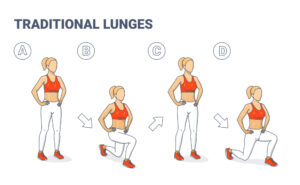
Strength Training for Runners: The Secret to Getting Stronger & Running Faster
Introduction
Strength training is one of the most overlooked concepts for runners.
Some may say that it’s not necessary at all and running should be enough to work on your overall strength.
But in today’s world, you need more than just cardio endurance and the right mindset to handle high-intensity performance, from sprinting to lifting heavy things without getting hurt!
If you want a faster race time or better results while working out, then do yourself a favour and start studying some strength training workouts.
What are the benefits of strength training for runners?
Strength training benefits runners by strengthening the muscles of your foot, ankle, and lower leg. It can also help lessen injury risk as well as develop greater speed and endurance.
There is even some evidence that it can improve recovery after marathons.
How Does Weightlifting Make Runners Run Faster?
The exact mechanisms through which weightlifting helps runners are not yet fully understood. However, there is a lot of research that has been conducted that points to the benefits of weightlifting in endurance sports. These studies have shown that lifting weights can help runners speed up their pace, increase leg drive, and improve overall efficiency.
This means faster running with less effort.
Strength training has been proven to improve running economy (how much oxygen your body uses at a certain velocity) by improving neuromuscular coordination and power. Lifting weights helps runners use less energy and oxygen to run, so they can run faster for longer.
Lifting for runners can also prevent injuries by strengthening muscles and connective tissues.
Should runners lift heavy or light?
The answer to this question is “it depends”. It depends on many factors such as what areas you want to improve or focus on, do you have a race coming up etc. The important thing for runners is to find what works for them.
According to a recent study, runners should lift moderate to heavy weights with low repetitions at least twice a week.
Lifting light weights may have some benefits for runners as well, such as improving flexibility and endurance. However, there is no evidence that lifting light weights actually improve running time or performance.
Generally, you should try and separate running and lifting sessions, especially if you are planning on going hard in either one of them.
If you only plan on an easy run then scheduling it in after a weights workout might be best for performance.
How often should you strength train as a runner?
It is recommended that runners strength train 4-6 times a week.
Strength training reduces running injuries by improving muscle tone, connective tissues, joints and more resilience to fatigue.
There are many different types of strength exercises that can be used, so find one that works best for you and your personal goals.
Make sure to take adequate rest between sets and workouts in order to avoid injury and maximize results
How much does strength training improve running?
Strength training can help you to improve your running and make it more enjoyable with benefits such as increased power and speed.
Strength training also helps improve posture and running form, as well as mobility.
In turn, this can help prevent overuse injuries.
Further, strength training can improve running by correcting imbalances in muscle strength or mobility.
What are the best strength training exercises for runners?
It’s best to focus on the main areas such as legs, core and upper body when deciding on a strength training routine.
The exercises below are designed to be done at home with minimal equipment.
It can be done before or after an easy run to avoid overtraining the body.
Body Weight Core Strength Workouts for Runners
Core exercises are important for runners because they help to protect and stabilize the spine. They also help improve overall balance.
Most core workouts don’t require any extra equipment, so you can do them at home with just your body weight and floor.
Moves like squats, lunges, and deadlifts target most of the major muscles in your lower body at the same time.
Core workouts can be done at any time of day or night, depending on your schedule.
There are many different types of core workouts that can be tailored to your individual needs and preferences.
Core workouts should be performed at least twice a week in order to achieve the most benefits for runners.
Movement and Form
It should go without saying but when starting out on a new strength program make sure to focus on your technique and maintain proper form.
If in doubt speak to a professional and get coaching so you establish a good foundation from day 1.
Hopefully, this is something you plan to do for the long term so getting it right early will pay dividends in the future.
1. Bodyweight Plank
Plank is a classic core workout for runners.
It is an excellent exercise for those who are looking to learn how to stabilise their core and engage their abdominal muscles.
To perform the plank get into a push-up position, except rest on your forearms instead of having your arms straight.
Aim to hold the position for 30 seconds and then gradually increase the time each week.
How fast you progress depends on you however adding 10-30 seconds to your target time each week is an easy way to build up.
Once you get to the 3-5 minute range you may need to find more difficult variations such as adding twists to keep the challenge!

2. Glute Bridge
The glute bridge is a great way to target the glutes and hamstrings, as well as to improve core stability.
The main benefits of performing the glute bridge are improved posture, increased strength and flexibility in these muscles, and better balance overall.
To perform the exercise lie on your back with your knees bent.
Slowly push up through your heels aiming to push your pelvis to the ceiling.
Pause at the top of the movement and feel the contraction in your glutes.
Slowly lower yourself back to the floor.
That counts as one repetition.

Aim for 3 sets of 6-8 reps before considering either adding weight or slowing the movement down so you have longer pauses and more controlled movements (warning: this may cause your glutes to burn!).
3. Russian Twists for Balance
Russian twists target a bunch of muscles, including the abs, obliques, lower back and hamstrings.
Proper form is important for this exercise to be effective.
It can be performed on an unstable surface, such as a Swiss ball or stability ball, to increase the challenge.
You can do it at home with minimal equipment or with help from a personal trainer.
To perform the exercise sit on the floor, knees bent with your feet on the ground.
Lean back to about a 45-degree angle or to the point your feel your abs working held to hold your torso in position.
With your arms stretched out in front of you, hands clasped together.
Slowly rotate from side to side letting your core do all of the work.

Go slow and concentrate on the abdominal muscles doing the work.
For best results, perform the Russian twist twice per week for 30-60 seconds each time.
Leg Workouts for Runners
Moves like squats, lunges, and deadlifts are efficient leg workouts for runners.
These workouts can help improve stamina and endurance.
Make sure to warm up and stretch before starting any workout routine, especially if you are new to it
1. Body Weight Squats
Squats are an effective and challenging workout that targets every muscle in your legs.
Like many of these workouts, you can ramp up the difficulty of squats by doing them slower, adding weight or using only one leg (called a pistol or single-leg squat).
Proper form includes keeping your back flat and knees tracking close to or slightly over your toes.

Note: You may hear that your knees needed to stay behind your toes but this is a misconception. Go check out any Olympic weightlifter and you’ll see what I mean.
2. Single-Leg Deadlifts
The single-leg deadlift is an effective exercise that strengthens the glutes and hamstrings and can help prevent imbalances from occurring.
Start with bodyweight and only progress when you can perform the movement with good form.
Stand on one leg with your other leg off the floor.
Keep a slight bend in your knee, and keep your hips level as you lower yourself forwards feeling the stretch in the hamstring before returning to the start position.

3. Lunges to Improve Balance
Forward or reverse lunges are great for developing unilateral strength.
When performed correctly, lunges should help to improve balance and coordination.
The best way to perform them is from standing on a small gym step about 12 inches in height.
For a reverse lunge, step back with one leg until you are in a lunge position.
Step back up onto the gym step.
Aim for 3 sets of 6-8 reps.

Once bodyweight becomes easy add weight in the form of a weighted vest or holding a kettlebell.
Upper Body Strength Training for Runners – Chest, Back and Arms are Important too
Moves like squats, lunges and deadlifts are efficient leg workouts for runners because they target most of the major (and minor) muscles in your lower body at the same time.
However upper body workouts are important for runners too.
The best ones are push-ups and pull-ups.
If you are unable to do pull-ups then weighted rows are also excellent.
People like to overcomplicate upper body workouts but performing 100 bodyweight pushups with good form and 10 bodyweight pull-ups are challenging for anyone.
Cross-Training for Runners
Cross-training is a way to break out of the same movement patterns and give your other muscles some work.
It includes low-impact activities, like cycling or swimming, or you can up the intensity with explosive plyometric exercises.
These can help improve endurance and reduce the risk of injury.
It is important to find a program that fits your individual fitness level and running schedule.
Should you stretch after working out?
This has become an area for debate in recent years.
Historically the advice was always to stretch after a workout, whether that was weight training or running.
However recent research has found no benefits from stretching after a workout.
That said anecdotally a lot of people swear by it.
In short, if you feel like it benefits you then you should do it, however, if you are on the fence there doesn’t appear to be hard evidence at this point in time to make a firm recommendation on it.
Putting it All Together – A Strength Training Workout for Runners
Now we have a basic menu of exercises here’s how to put it all together.
Aim for 3 lifting workouts per week of approximately 30 minutes duration each.
You can make the sessions whole body to improve efficiency.
Start with legs and bodyweight squats in order to ease into the workout and warm up the body.
You can then mix in exercises so you keep the body moving and burn more calories.
Here’s an example workout:
10 Bodyweight Squats
5-10 Push-ups
20 Seconds Plank
Repeat three times before moving to the next mini-sequence.
10 Reverse Lunges
6-8 Bent-over Rows
10 Glute Bridges
Repeat three times before resting.
Mini-sequencing keeps things interesting and is quicker than going from one exercise to the next.
Weights For Runners
The above focuses a lot on bodyweight exercises but at some point, you will want to add more weight to keep making progress.
The best additions to your home gym will be either kettlebells or a weighted vest.
The benefit of a weighted vest is that it improves all exercises.
The downside is that it can be limited to a set weight.
Kettlebells are a fantastic addition and can often be more versatile than dumbbells.
You can even find adjustable kettlebells if you want to save room.
When you do start adding weight go slow and make sure to use good form.
Summary
Assuming your diet is tuned in then adding in a basic strength routine 3 times per week should start showing results from about week 4 onwards.
After a while, you may find you need to join a gym to keep increasing the resistance and making progress.
That said by varying reps and speed of movement you can make any of the above exercises more challenging to the point that it can be a long time before you need to consider adding additional weights.
As with anything start easy and slowly build up over time.
Enjoy!








